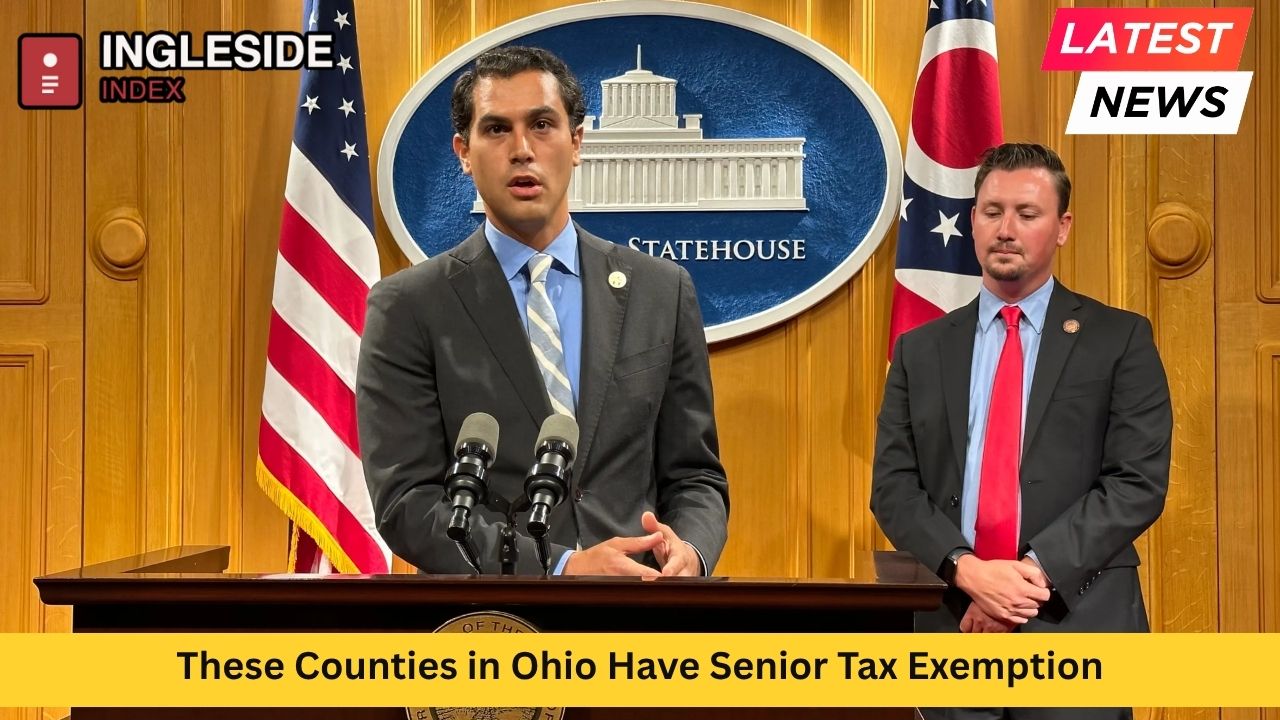Ohio stands out as one of the states that provide property tax relief for its aging population. As property values climb and the cost of living increases, many seniors across the Buckeye State depend on targeted tax relief programs to maintain financial stability and remain in their homes. The state’s homestead exemption is the central mechanism, but the way it’s implemented at the county level includes local nuances, varying application procedures, amounts saved, and public awareness. In this long-form guide, we’ll explore how the senior tax exemption works, eligibility rules, details for various Ohio counties, and how these localities help seniors—from the bustling streets of Columbus and Cleveland to smaller communities such as Logan and Washington counties.
Understanding the Ohio Senior Tax Exemption
Ohio’s senior tax exemption program is widely known as the Homestead Exemption. Its goal is to reduce property taxes for seniors (typically those aged 65 and over), individuals who are permanently and totally disabled, and surviving spouses of qualifying homeowners. The exemption removes a set portion of a home’s value from property taxation, resulting in reduced annual tax bills.
For 2025, the general homestead exemption shields up to $28,000 of a home’s appraised value from being taxed. Disabled veterans enjoy an even higher threshold, with up to $56,000 of their home value exempt from taxes. The eligibility criteria typically include being at least 65 years old (or qualifying as totally and permanently disabled), owning and occupying the home as your primary residence, and meeting annual income limits—which in 2025 is $40,000 for household Ohio Adjusted Gross Income.
Key eligibility requirements:
-
Age 65 or older (by December 31 of the year of application), OR permanently and totally disabled
-
Own and occupy the residence as your principal place of living
-
Household income at or below the set limit for the year
County-by-County Implementation
While the Homestead Exemption is state-mandated and available in all 88 counties, the experience—application process, public outreach, support, and even some supplemental local relief—varies widely across the state. Below, we explore how this plays out in cities and counties across Ohio.
Franklin County (Columbus)
Franklin County, home to Columbus, has one of the largest populations of seniors benefiting from the exemption. Local seniors can apply online or in person, and the Auditor’s Office uses digital tools to verify eligibility, including direct access to state tax records for income verification. The county provides workshops and outreach at senior centers, making sure older homeowners understand the exemption and don’t miss annual deadlines. The typical Columbus homeowner under this program saves anywhere from a few hundred to over a thousand dollars annually, depending on property value and tax rates.
Cuyahoga County (Cleveland)
Cuyahoga County encompasses Cleveland and a mix of urban and suburban communities. It has a large number of enrolled seniors. The local Auditor’s Office actively distributes application forms during tax season and helps residents at neighborhood branches, libraries, and community centers. Special sessions are held for communities such as Lakewood, Parma, and Euclid. Cleveland residents, especially those living in century-old homes, often see significant tax relief due to the rising property values in neighborhoods like Ohio City and Tremont.
Hamilton County (Cincinnati)
Down in the Cincinnati area, Hamilton County processes thousands of homestead exemptions each year. The county has a user-friendly website, printable application forms, and bilingual support for diverse neighborhoods such as Over-the-Rhine and Price Hill. The local government works with nonprofits to directly reach seniors with limited mobility or lacking internet access.
Summit County (Akron)
Summit County, anchored by Akron, exempts the first $28,000 of appraised value for eligible seniors and maintains robust outreach through local libraries, senior fairs, and retirement communities. The county’s fiscal office provides step-by-step guidance and often features the exemption on its social media and newsletters targeted at seniors and their families.
Lucas County (Toledo)
Lucas County, which includes Toledo, implements the exemption with an emphasis on accessibility. The Auditor’s Office regularly mails reminders to seniors turning 65 and partners with local retirement communities to encourage participation. In 2025, the income threshold was raised to $40,000, making tax relief accessible to even more Toledoans. The savings have a major impact for neighborhoods in East Toledo and the Old West End.
Smaller Counties and Cities: Spotlight Examples
Many of Ohio’s smaller counties provide exemplary customer service for the homestead exemption, even if they process fewer applications. Here are a few notable examples:
-
Logan County: Seniors save an average of over $500 per year. The Auditor’s Office offers one-on-one phone consultations and helps late applicants secure retroactive relief where possible. This can be a game-changer for residents in Bellefontaine and the surrounding rural areas.
-
Stark County: The homestead exemption is explained in simple terms at local tax workshops in Canton and Massillon. The County Auditor has a hotline dedicated to seniors seeking guidance.
-
Wayne County: The program is a lifeline in cities like Wooster and Orrville, with specific support for residents who speak Pennsylvania Dutch and Amish communities.
-
Mahoning County: Home to Youngstown and Boardman, officials here go the extra mile, especially after scheduled revaluations drive up local property taxes. Outreach includes radio ads, open houses, and partnerships with senior advocacy groups.
-
Washington County: In counties along the Ohio River, such as Marietta in Washington County, property values are more modest, but the relative savings from homestead exemptions are deeply meaningful for retirees living on fixed incomes.
Statistical Impact and Statewide Reach
Across Ohio, more than 400,000 households benefit from the homestead exemption in a typical tax year. In larger urban counties like Franklin, Cuyahoga, and Hamilton, individual tax reductions for households routinely exceed $500 annually. In more rural counties such as Logan, Lawrence, or Meigs, the average might be slightly lower, but the tax relief represents a higher percentage of annual property taxes due.
Average property tax reductions by county:
| County | Average Annual Tax Reduction | City Example |
|---|---|---|
| Franklin | $550+ | Columbus |
| Cuyahoga | $575+ | Cleveland |
| Summit | $535+ | Akron |
| Lucas | $500+ | Toledo |
| Stark | $500+ | Canton |
| Wayne | $235+ | Wooster |
| Montgomery | $300+ | Dayton |
| Mahoning | $190+ | Youngstown |
| Logan | $128+ | Bellefontaine |
| Washington | $135+ | Marietta |
Eligibility Trends and Recent Changes
Ohio lawmakers have made efforts to keep the program aligned with inflation and rising home values. Previously, the value shielded from taxation was $25,000 for most seniors; it’s frequently adjusted upward as property values climb. For 2025, it’s $28,000 for seniors and $56,000 for disabled veterans.
The income limit for eligibility is reviewed regularly and now stands at $40,000 in Ohio Adjusted Gross Income, allowing more middle-income seniors in cities like Columbus, Dayton, and Cincinnati to qualify for relief.
Additionally, recent legislative proposals aim to further enhance the program. For instance, a discussed property tax cut could soon allow seniors of any income level to receive up to 50% off their property tax bill—a potentially transformative shift for the state’s older homeowners.
The Application Process
Seniors or their representatives can typically apply through their county auditor’s office, either online, in person, or by mail. Most counties post clear instructions and checklists on their websites, often with downloadable forms and documentation requirements. Common documents required include proof of age (such as a state ID or driver’s license), residency, and income verification (Ohio IT1040 or federal tax returns). Veterans and disabled applicants may need to provide additional eligibility forms.
Hotspots for maximal use of the program include:
-
Urban neighborhoods in Cleveland, Cincinnati, and Columbus with a high density of older homeowners
-
Retirement communities throughout counties such as Greene and Medina
-
Rural and Appalachian counties where property taxes are a heavier proportion of retirement income, like Vinton or Monroe
Special Programs and Enhanced Exemptions
Some counties offer extra relief for disabled veterans and surviving spouses of public safety officers killed in the line of duty. Counties such as Lorain and Montgomery have advocated for further expansion, including automatic re-enrollment each year to avoid seniors missing out due to paperwork.
Other counties supplement state funds with additional discounts or local credits for seniors struggling with tax bills. Outreach and support also differ—some counties, like Summit and Franklin, partner with senior centers, while others involve libraries, churches, and schools.
Community Impact and Stories
Ohio’s senior tax exemption program has enabled thousands of older adults to stay in their homes, even as fixed incomes fall behind inflation. For someone in Youngstown or rural Pike County, having $500-$1,000 less in property taxes each year often pays for vital home repairs, groceries, or medical expenses. In urban counties, where gentrification drives up taxes on long-time residents, the exemption can make the difference between staying or leaving a cherished neighborhood.
County auditors and community partners regularly share stories of seniors who were unaware of the program, only to have their financial burdens eased after applying. Outreach efforts remain crucial: seniors are encouraged to check with their local auditor’s office, senior services agency, or community organization to confirm eligibility and file promptly.
Outlook and Legislative Trends
With the state’s population aging—the percentage of Ohioans aged 65+ is projected to exceed 19% by 2030—the reach and effectiveness of the homestead exemption is a critical public policy issue. Legislative proposals continue to expand the income cap, raise the exempted amount, and add automatic inflation adjustments. Ohio’s approach is often cited as a model for balancing fiscal conservatism with strong support for older residents—and robust local administration ensures that seniors in every part of the state, from Cincinnati to Ashtabula, can access the benefits.
Key Takeaways
-
Every county in Ohio participates in the Homestead Exemption for seniors, though public outreach and application support may differ by locale.
-
The exemption shields a significant portion of home value from property taxation, with higher relief for disabled veterans.
-
Eligibility requires age or disability status, principal residence, and an income below the annually-set threshold.
-
Counties like Franklin, Cuyahoga, Hamilton, Lucas, and Summit serve the largest numbers of seniors, with considerable financial impact for eligible homeowners.
-
Future expansions and upgrades to the program are under consideration, including proposals to dramatically increase the amount of tax relief for all seniors.
-
Seniors are encouraged to connect with their county auditor to apply or confirm ongoing eligibility. No matter where in Ohio you live, the Homestead Exemption can be a valuable tool for aging in place and maintaining financial security.
In summary, whether you are in Cleveland, Columbus, Toledo, Youngstown, rural Putnam County, or anywhere else in Ohio, the Homestead Exemption stands as a vital resource for seniors and disabled homeowners to lighten their property tax burden and fortify financial stability. If you or a loved one qualifies, reach out to your local county auditor and take advantage of this powerful benefit.






Leave a Comment